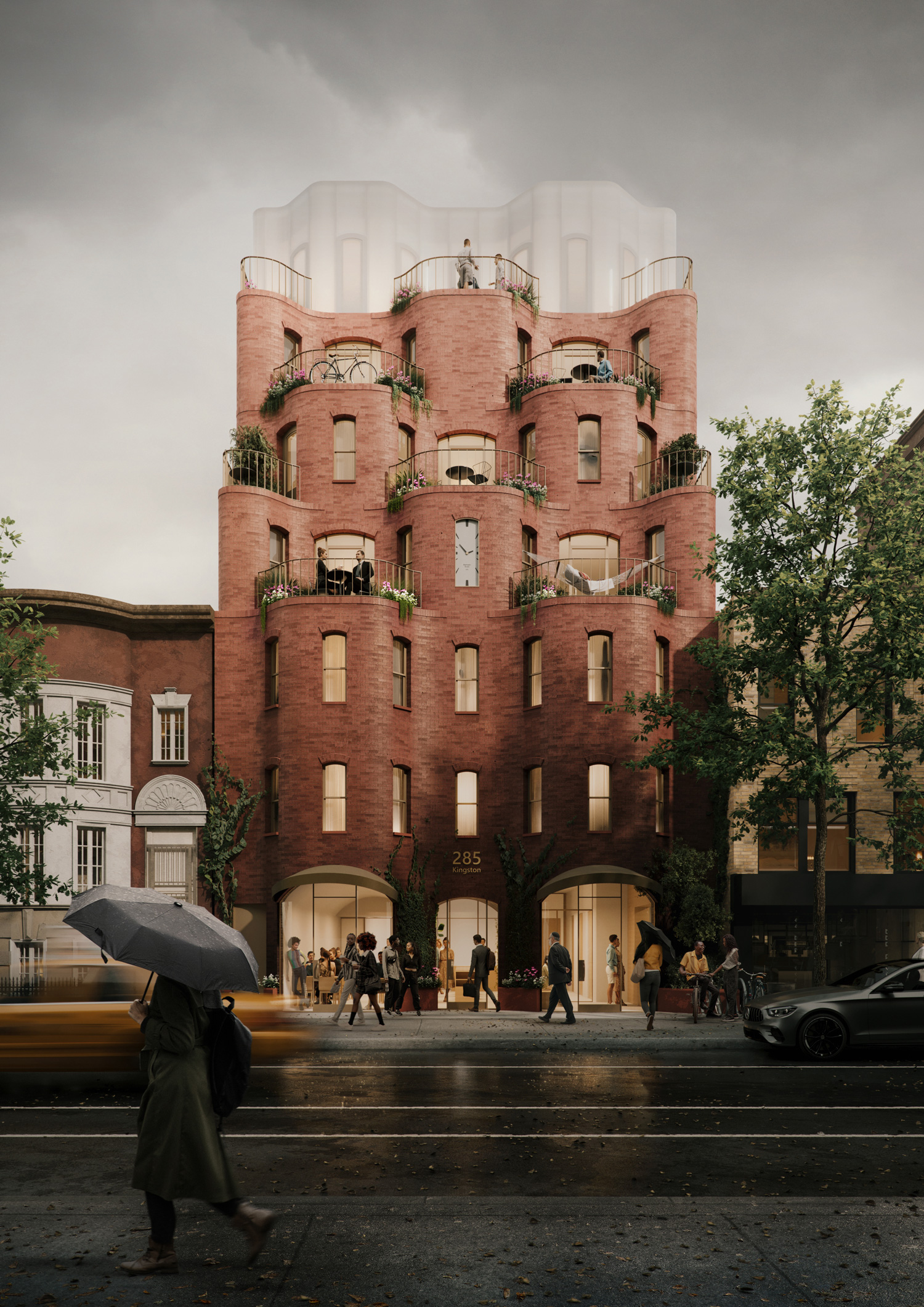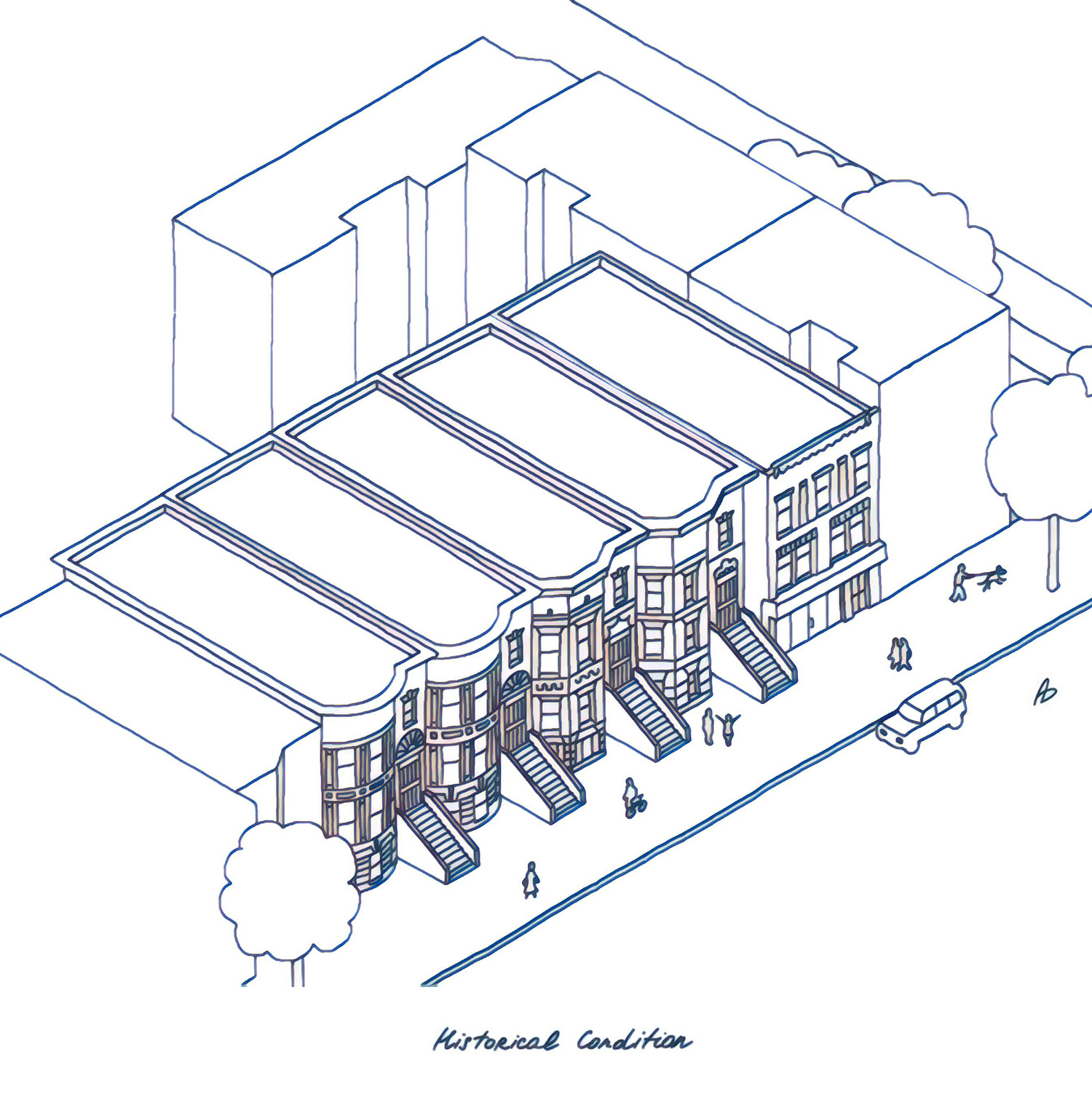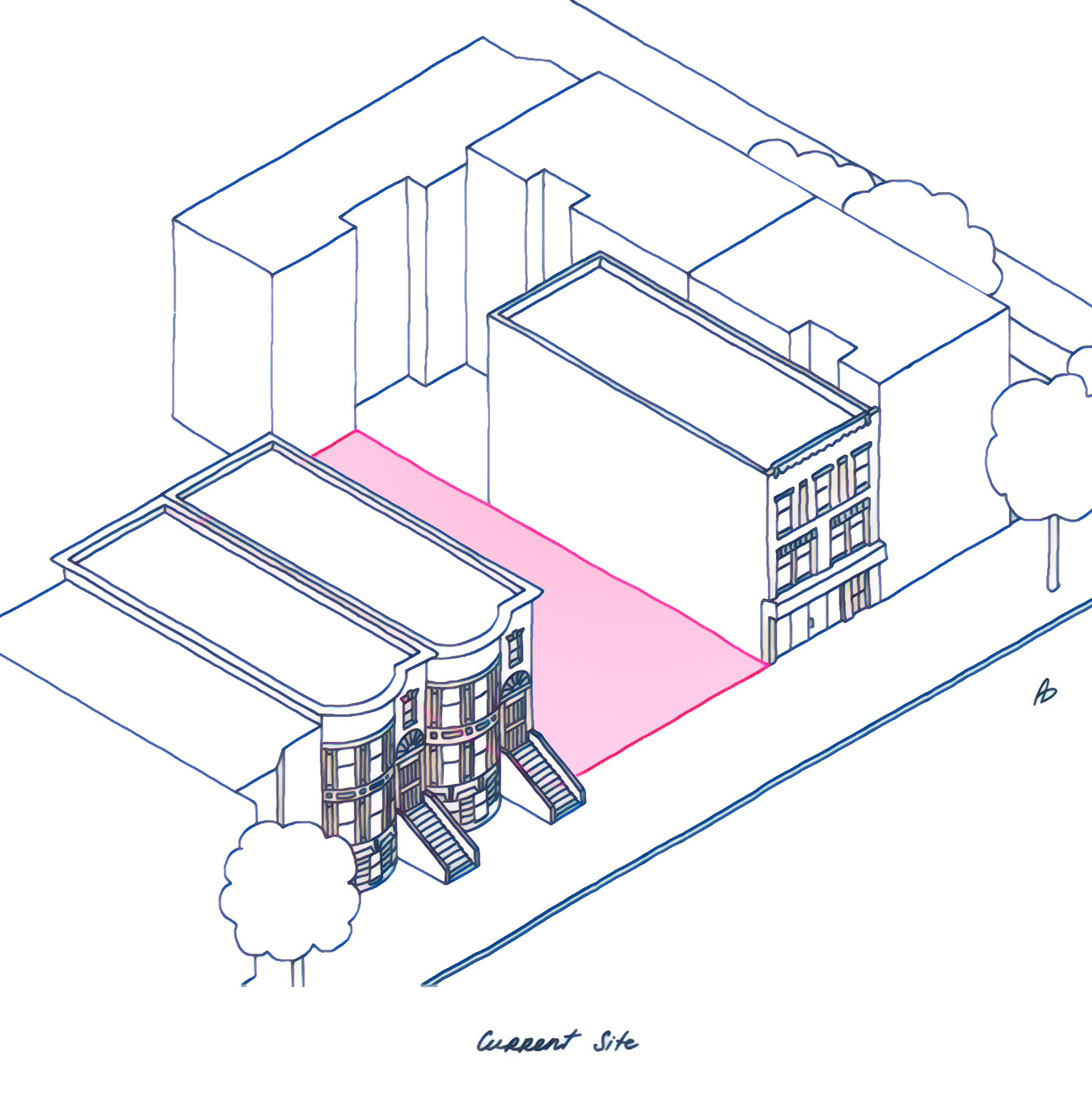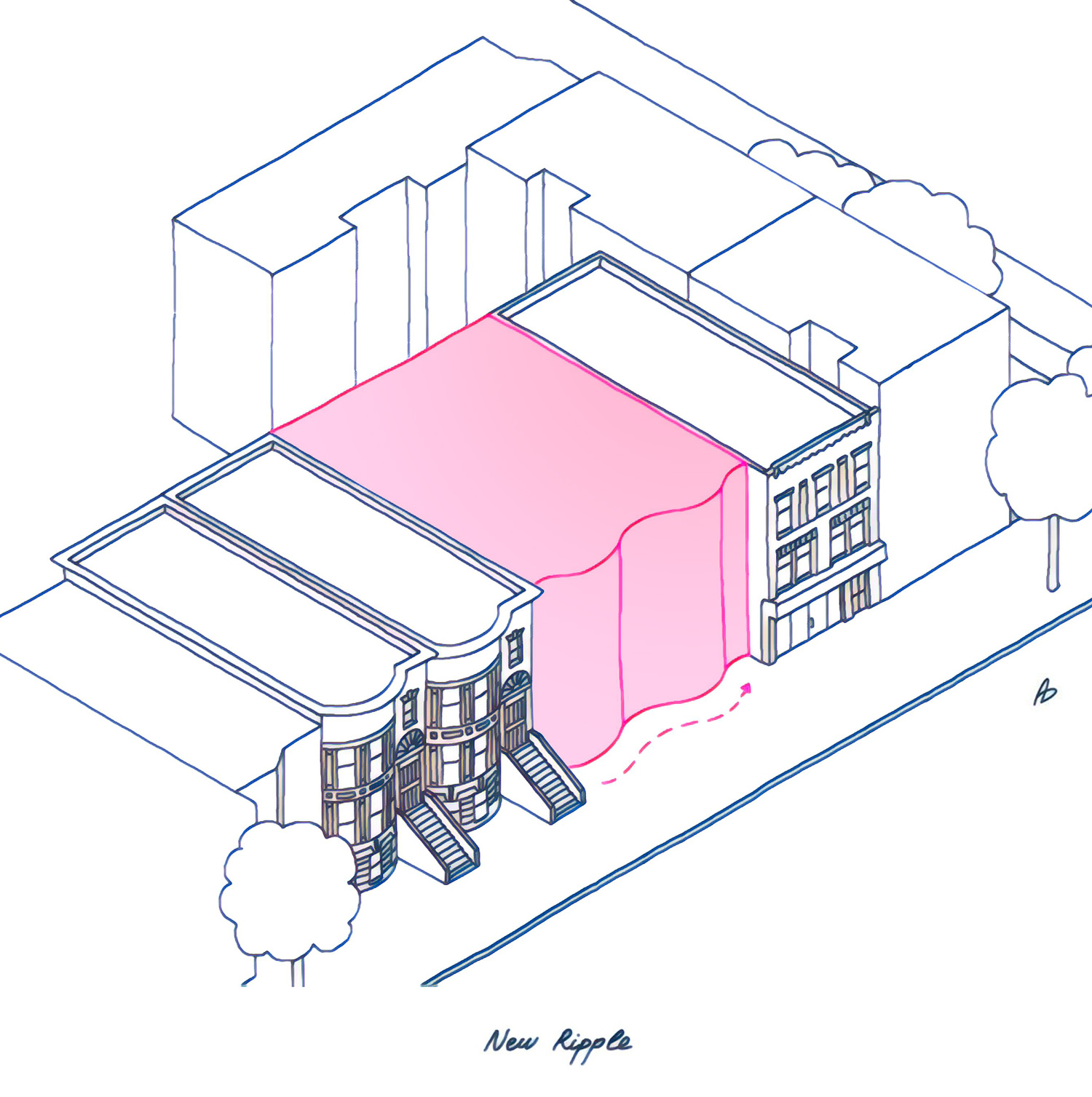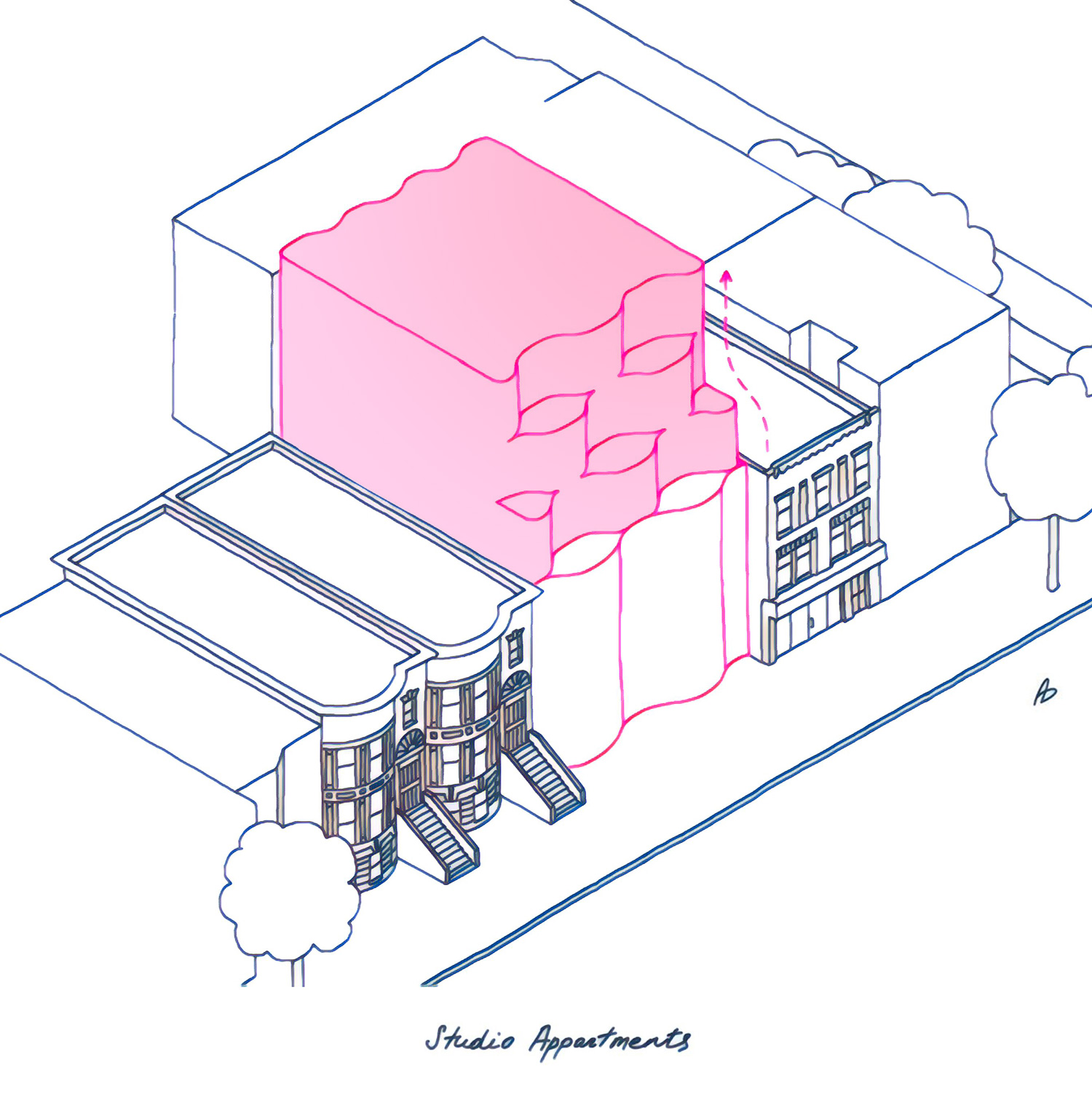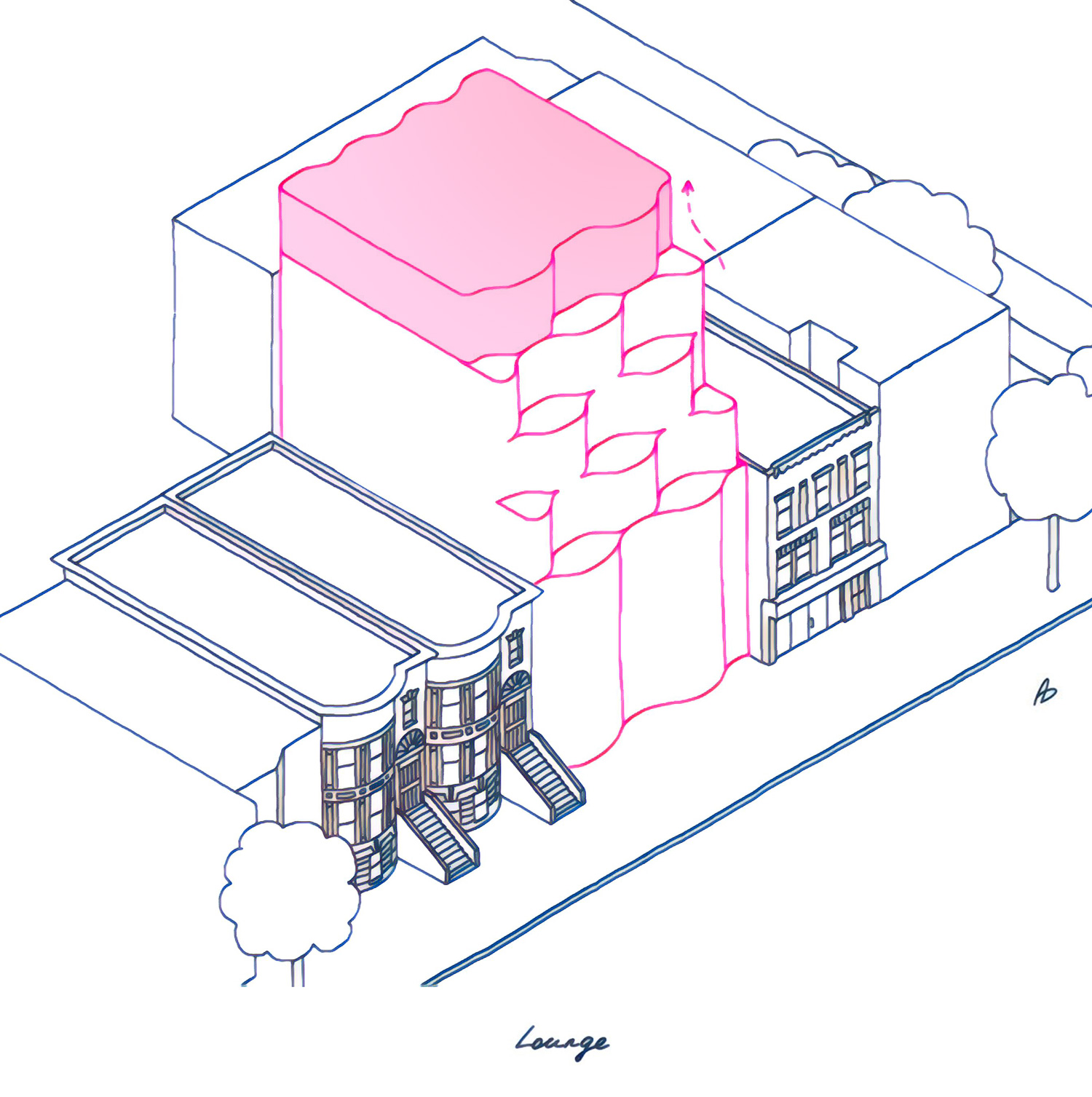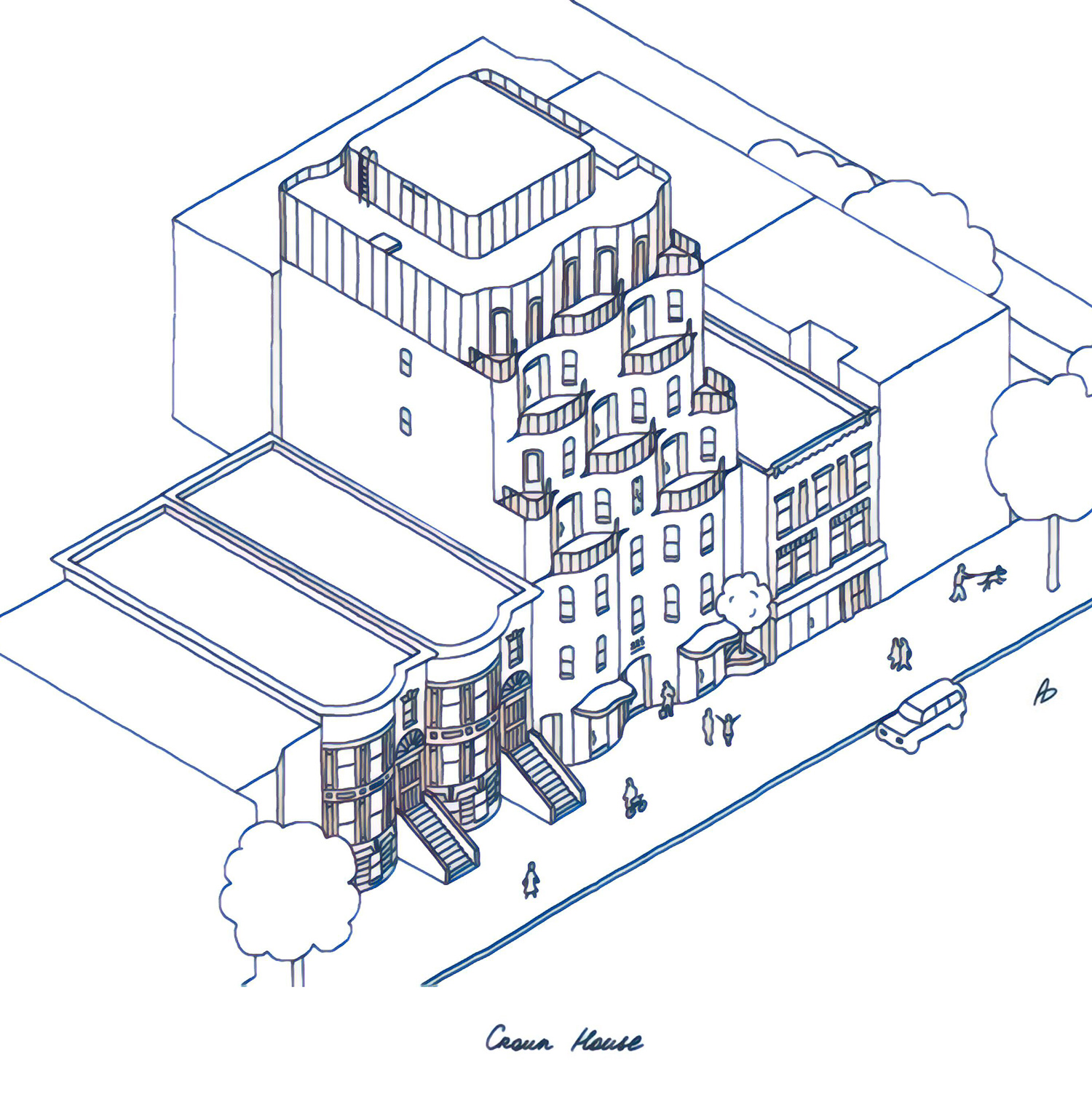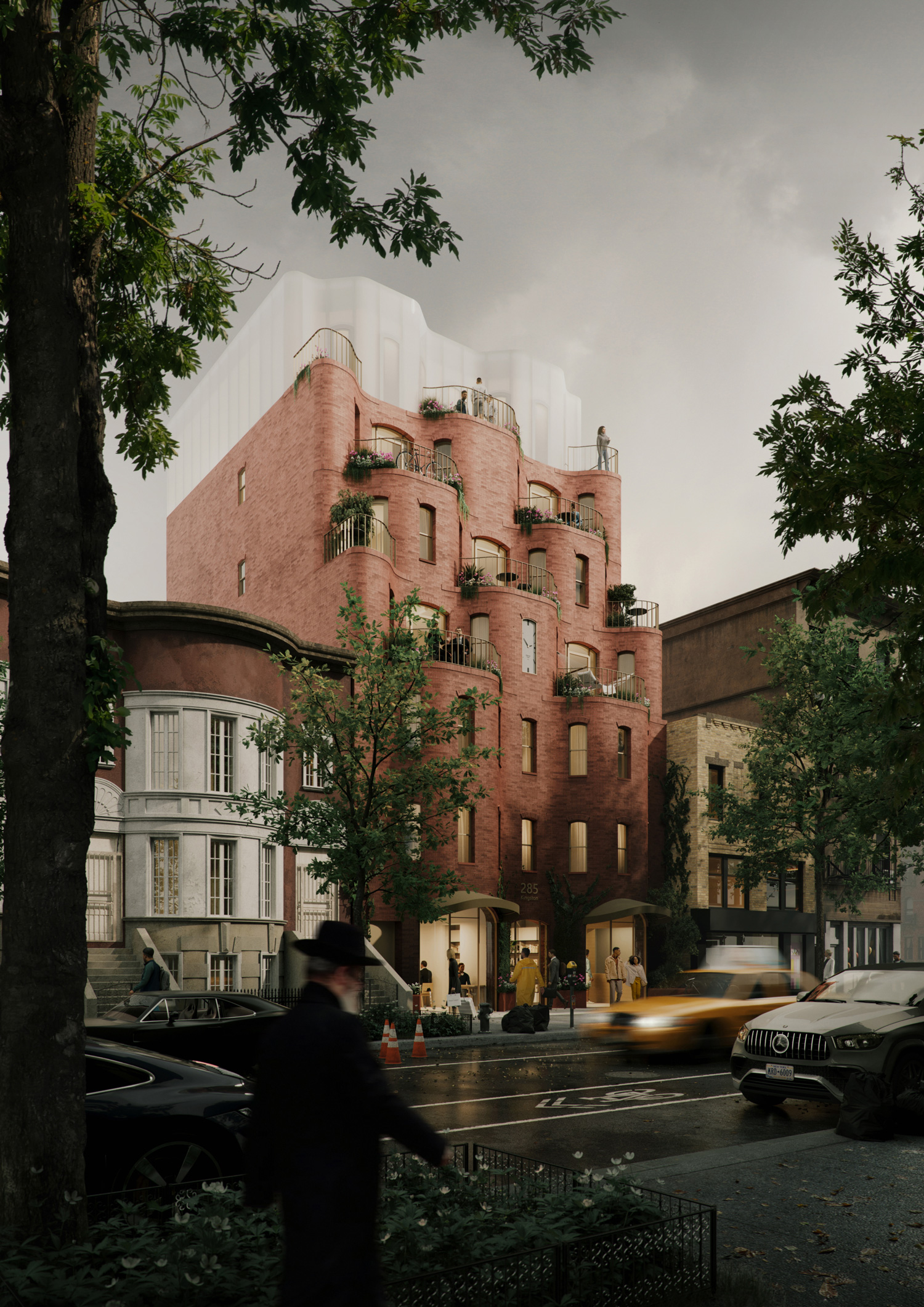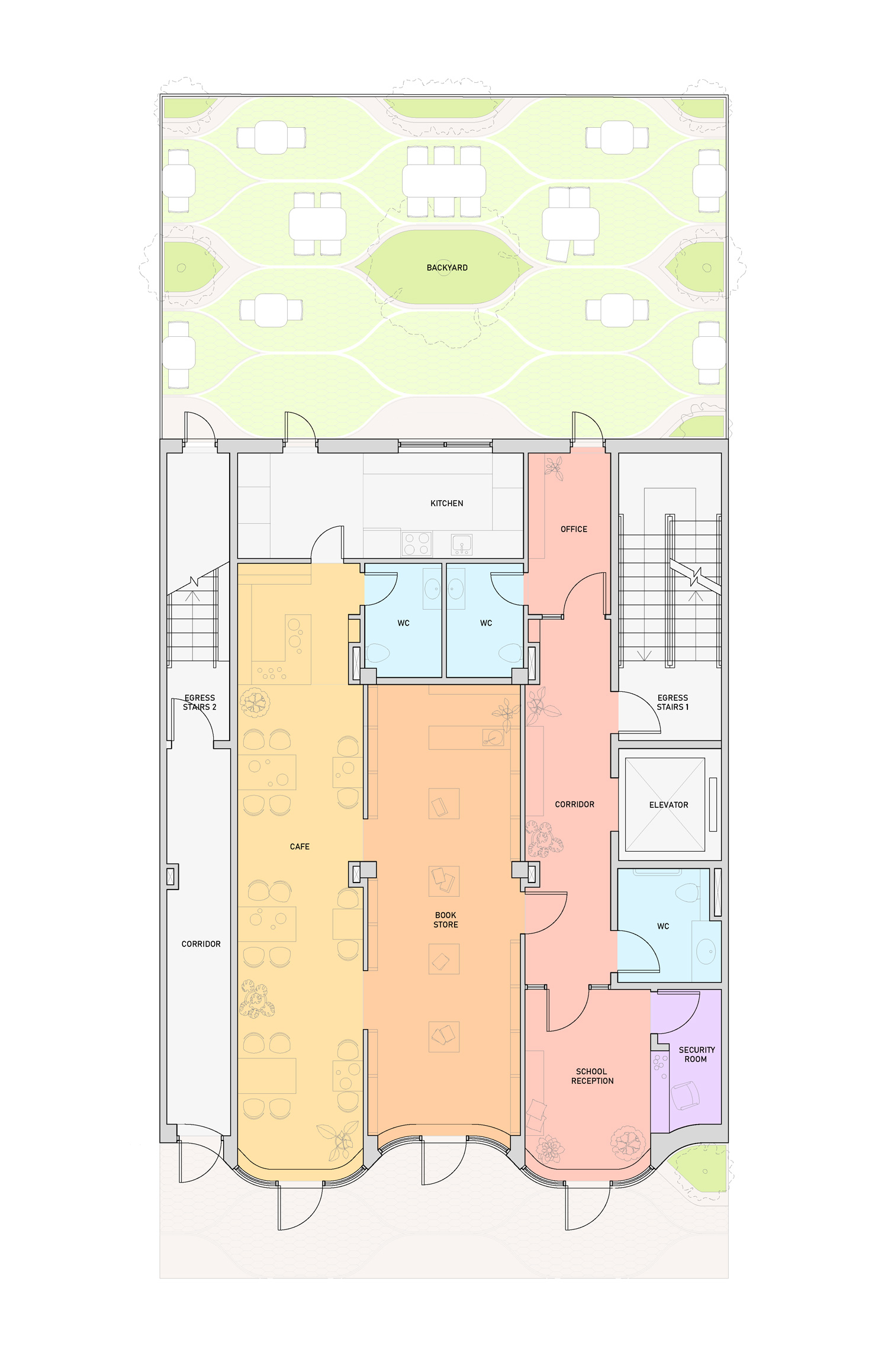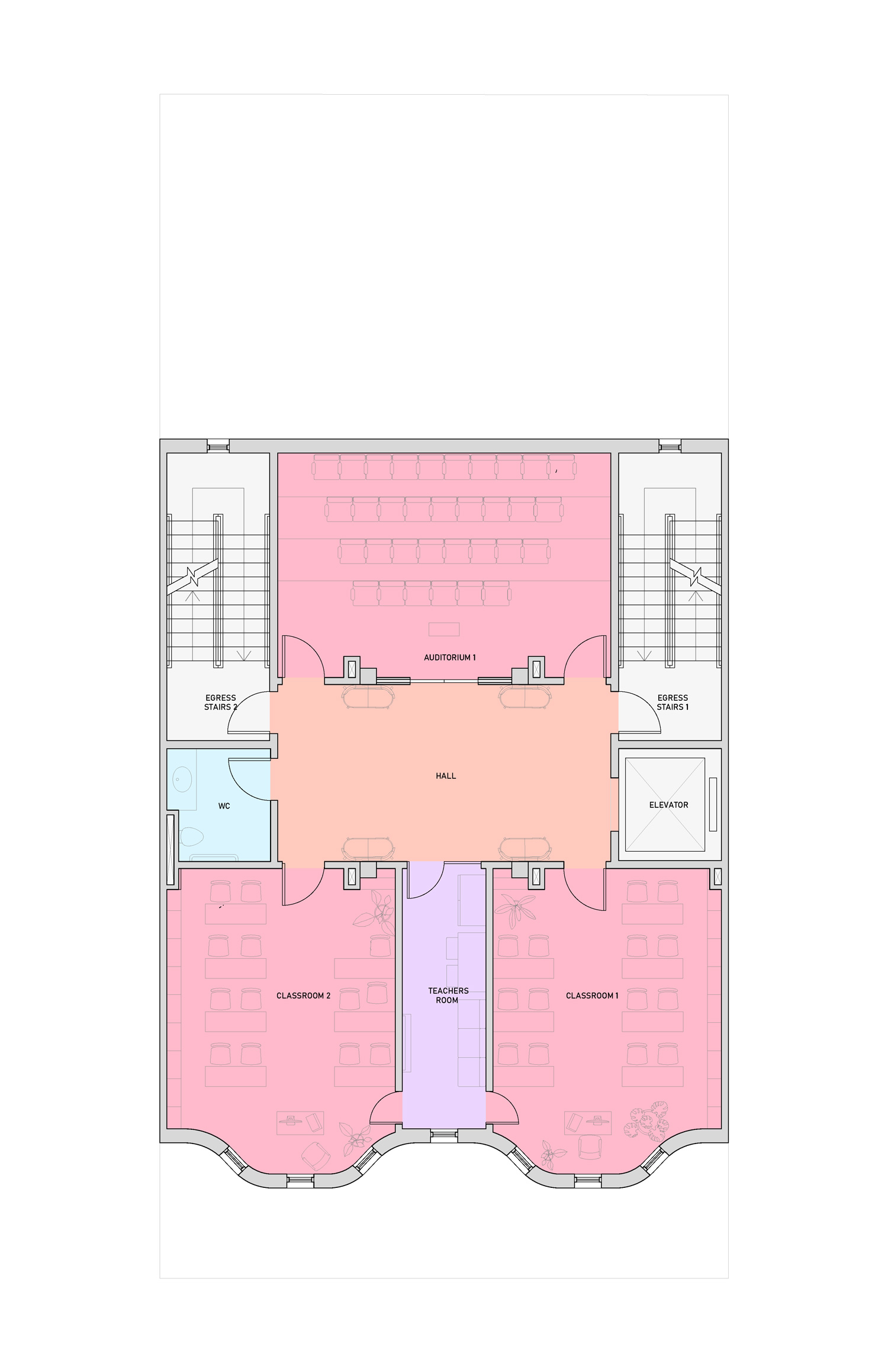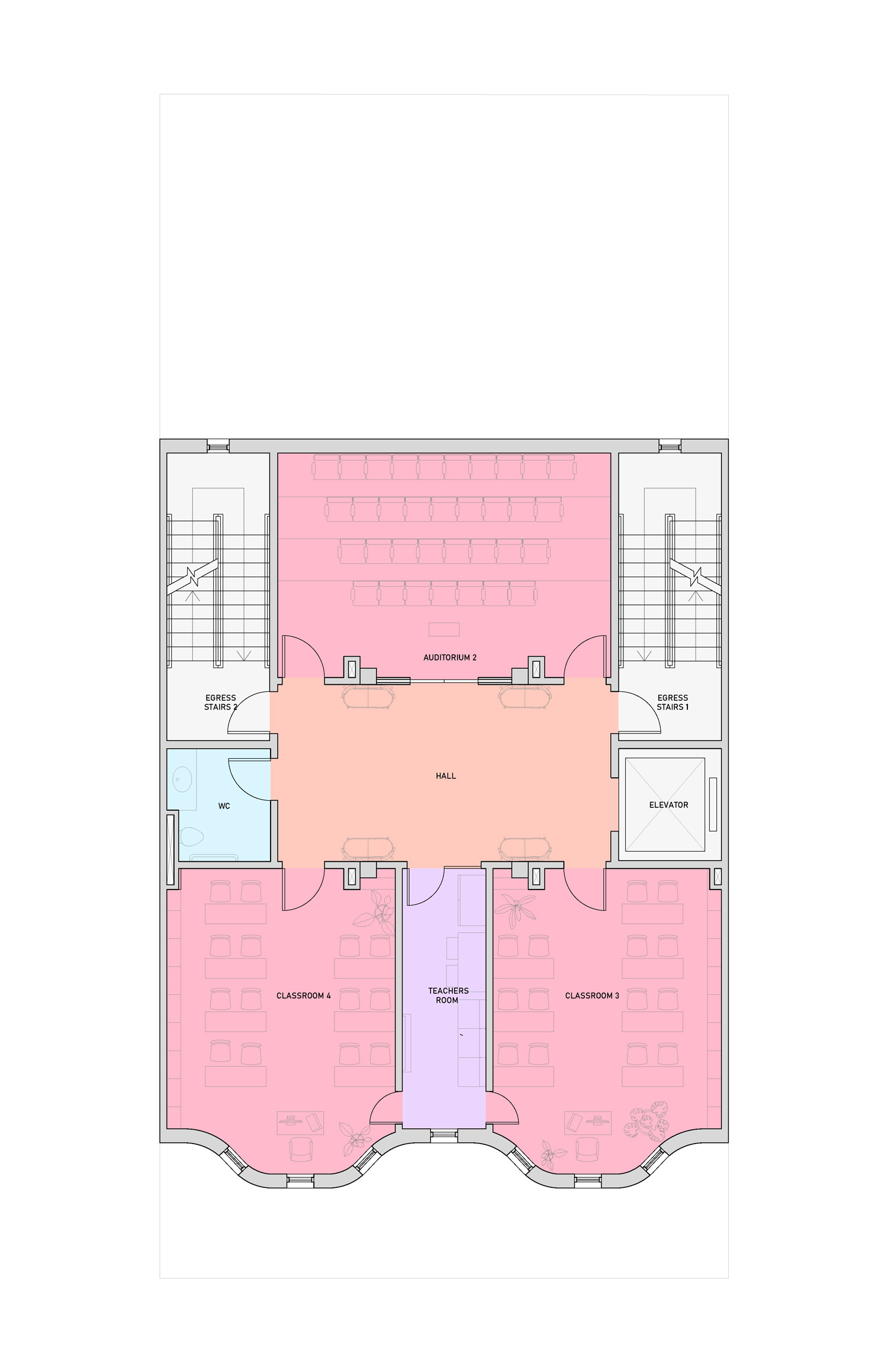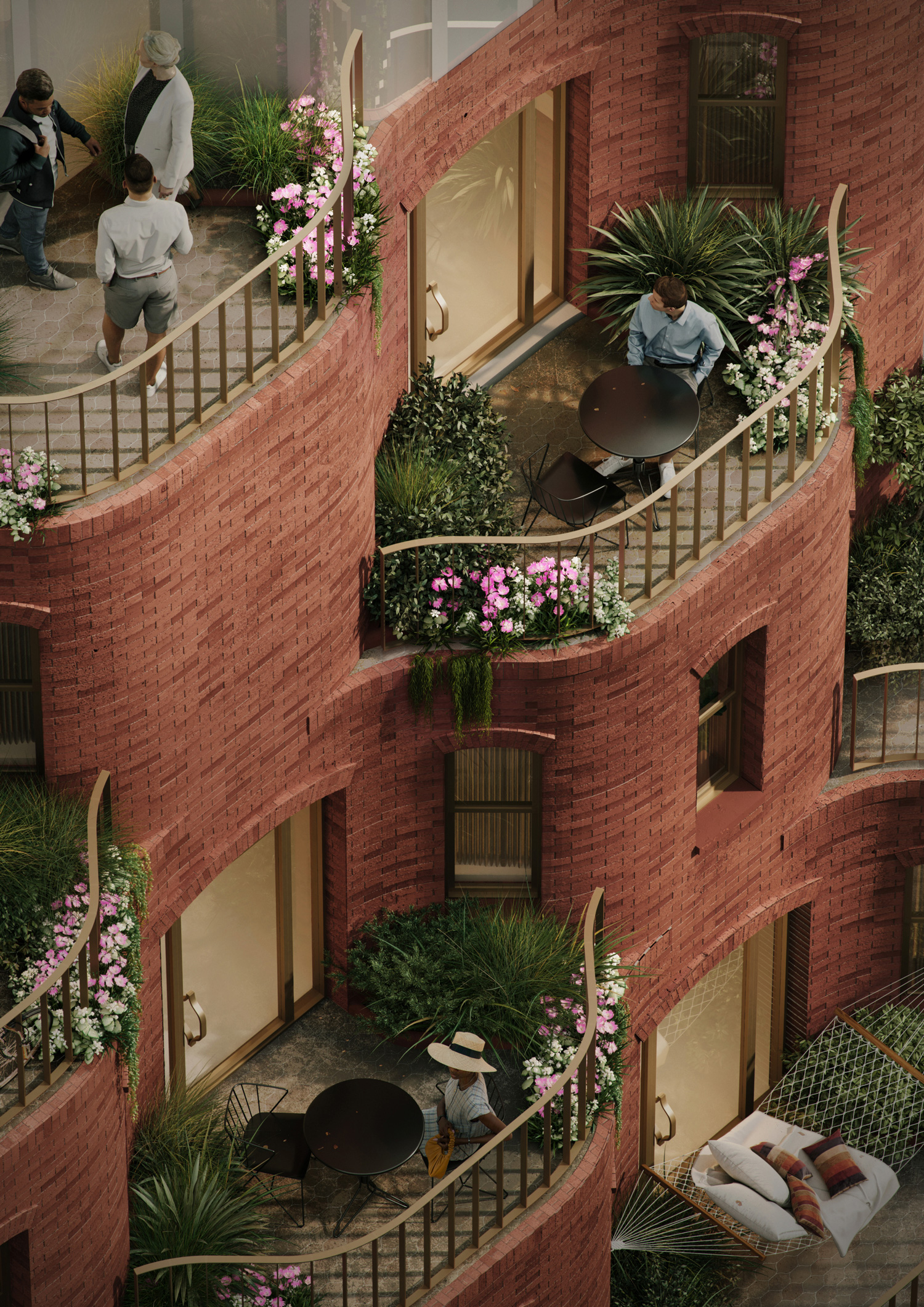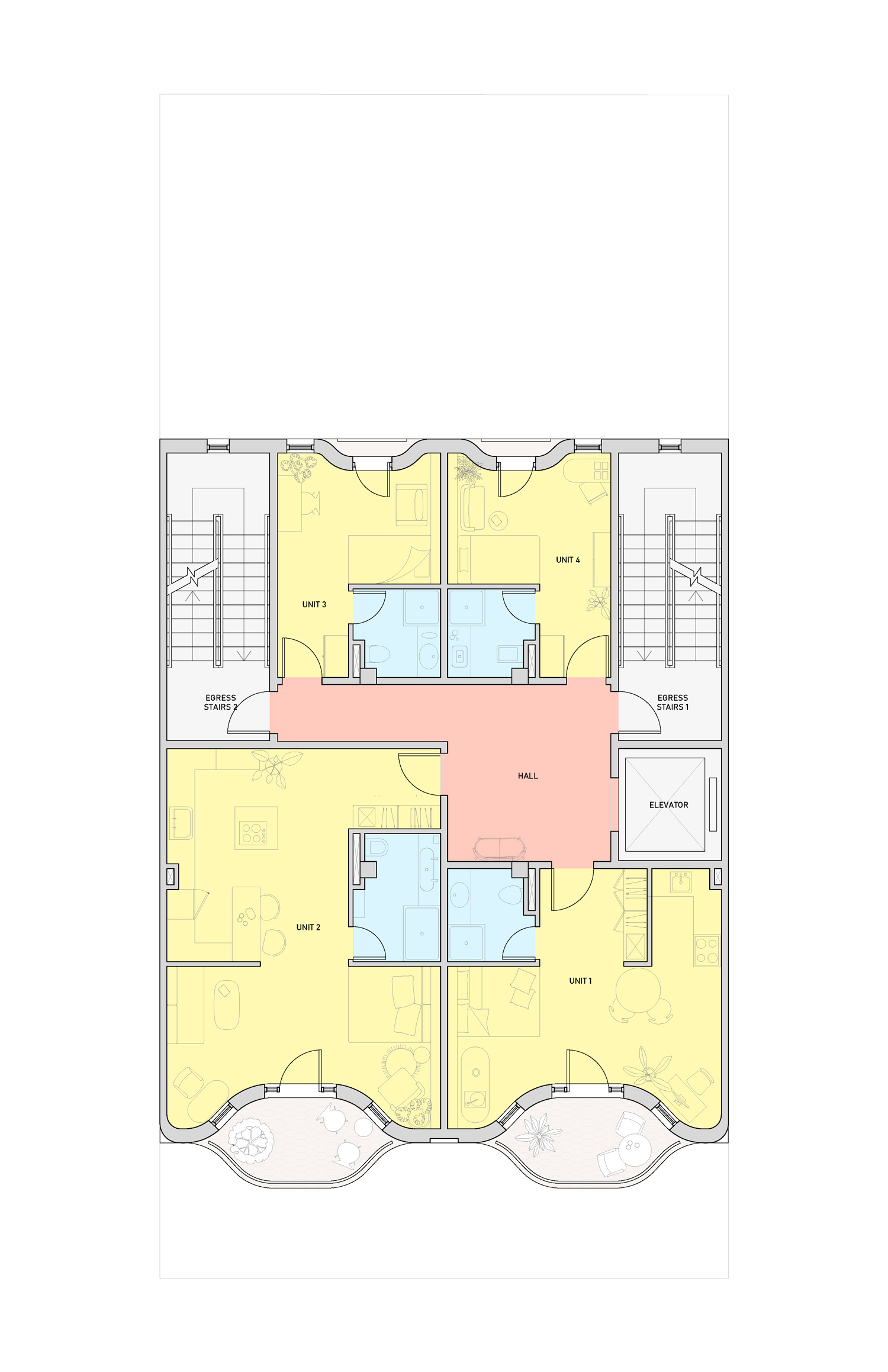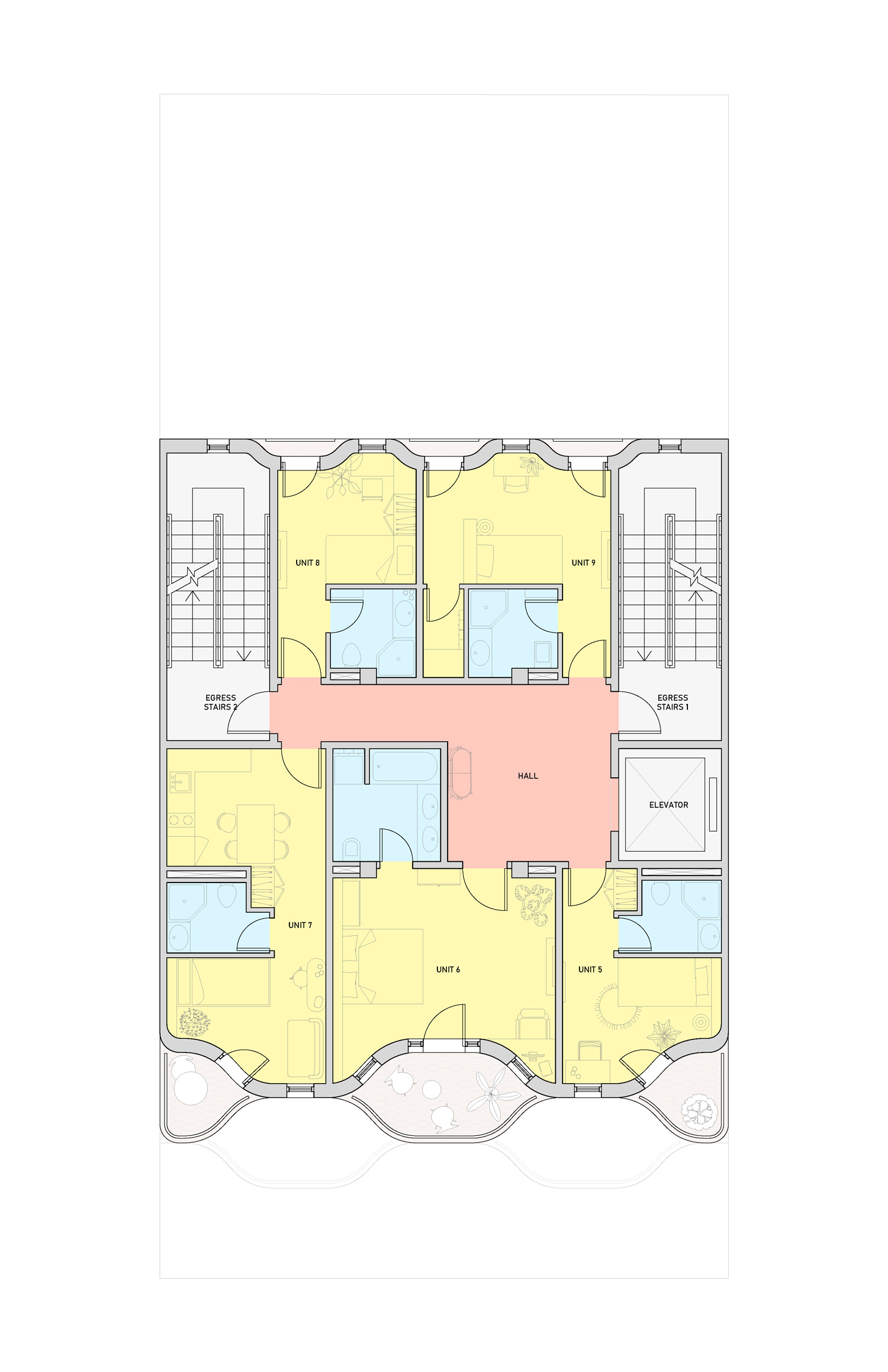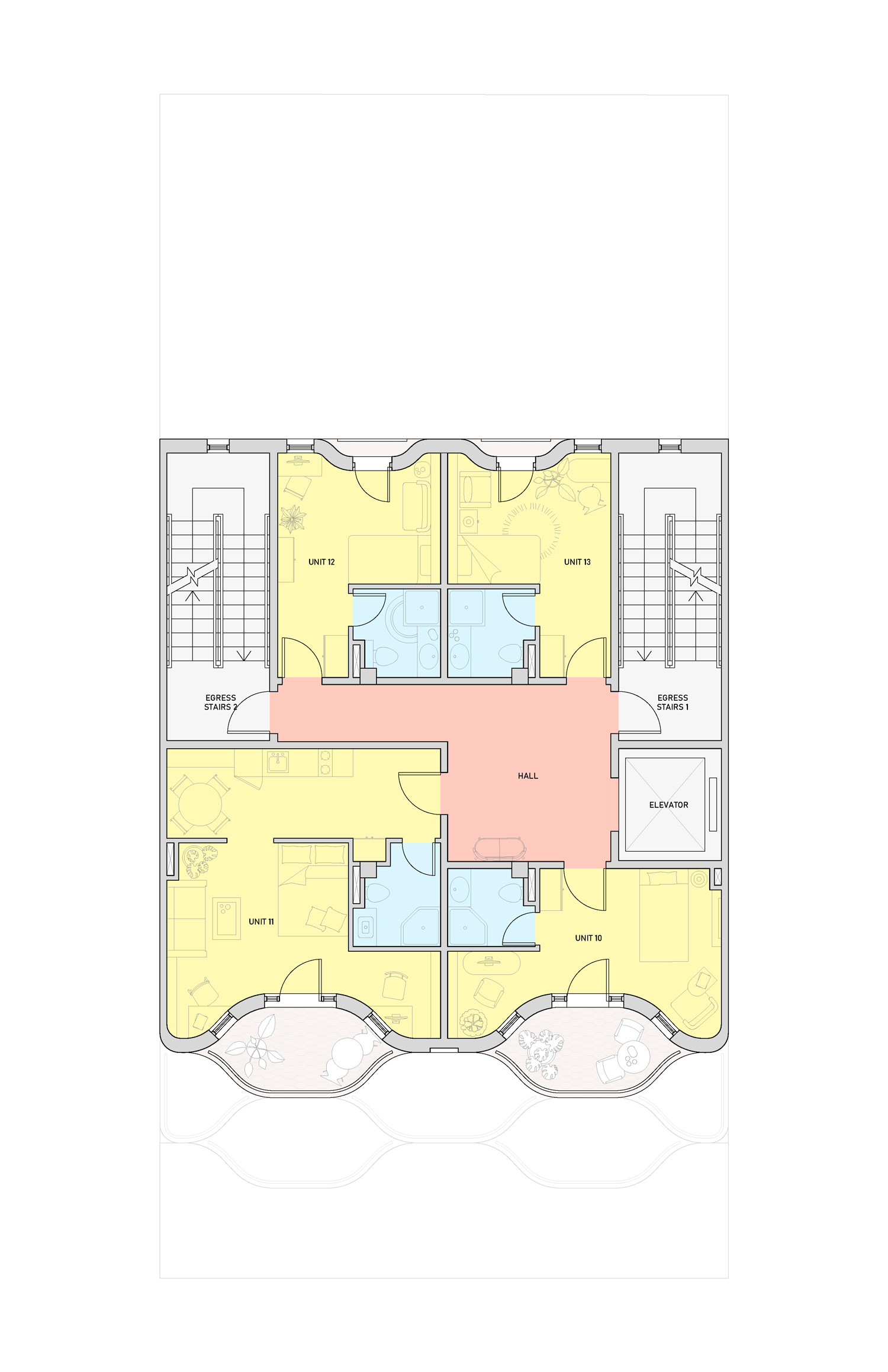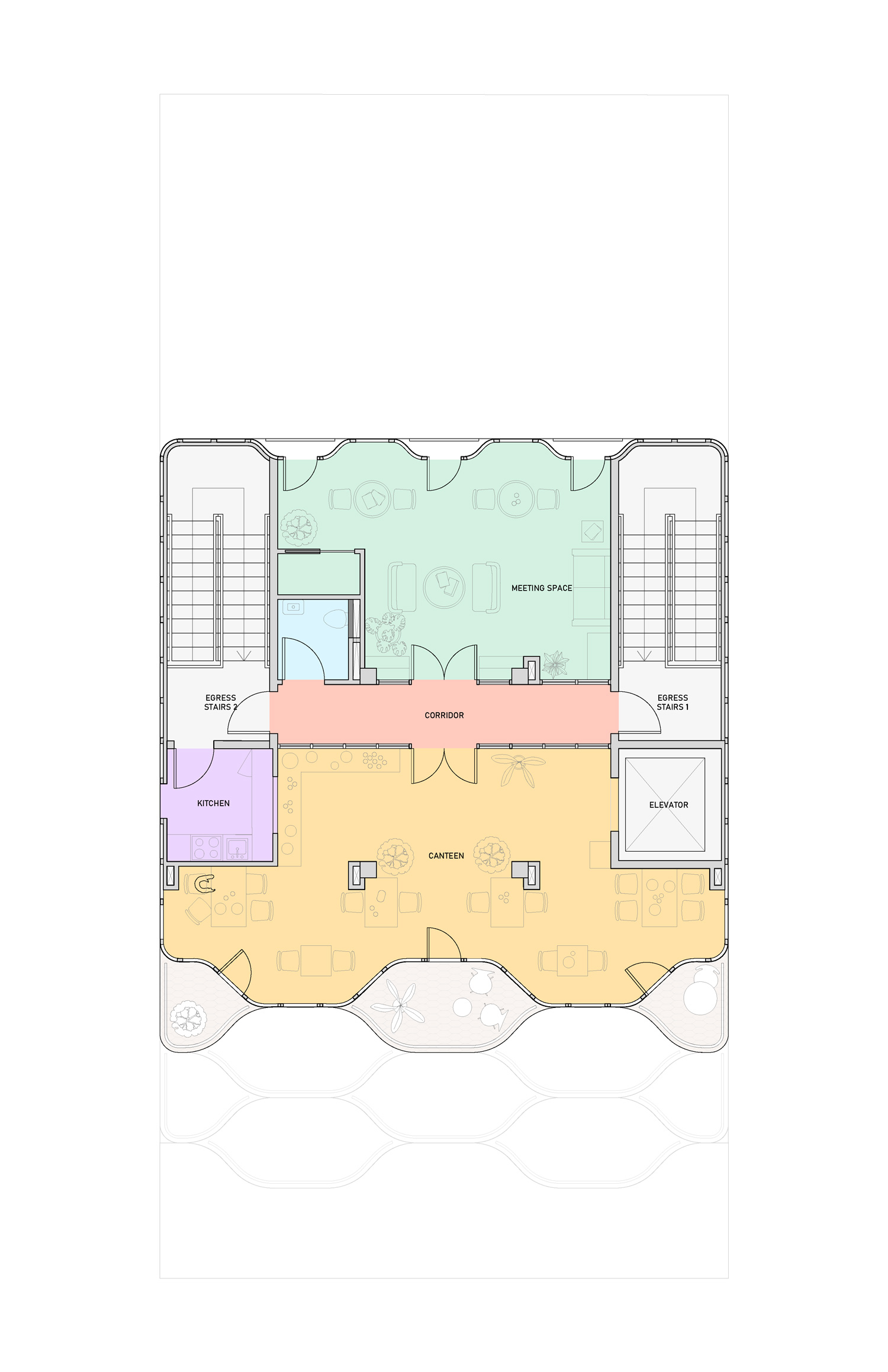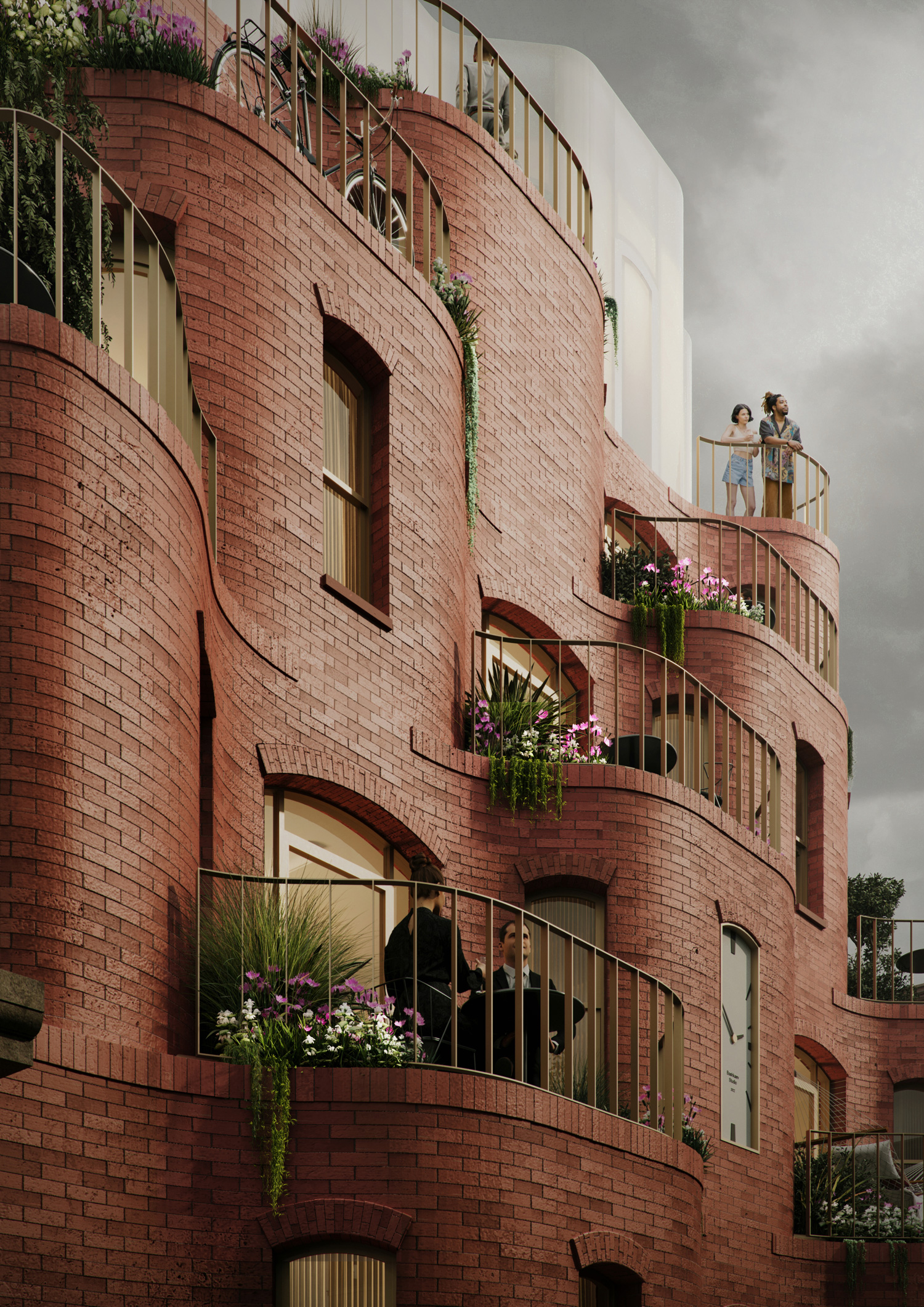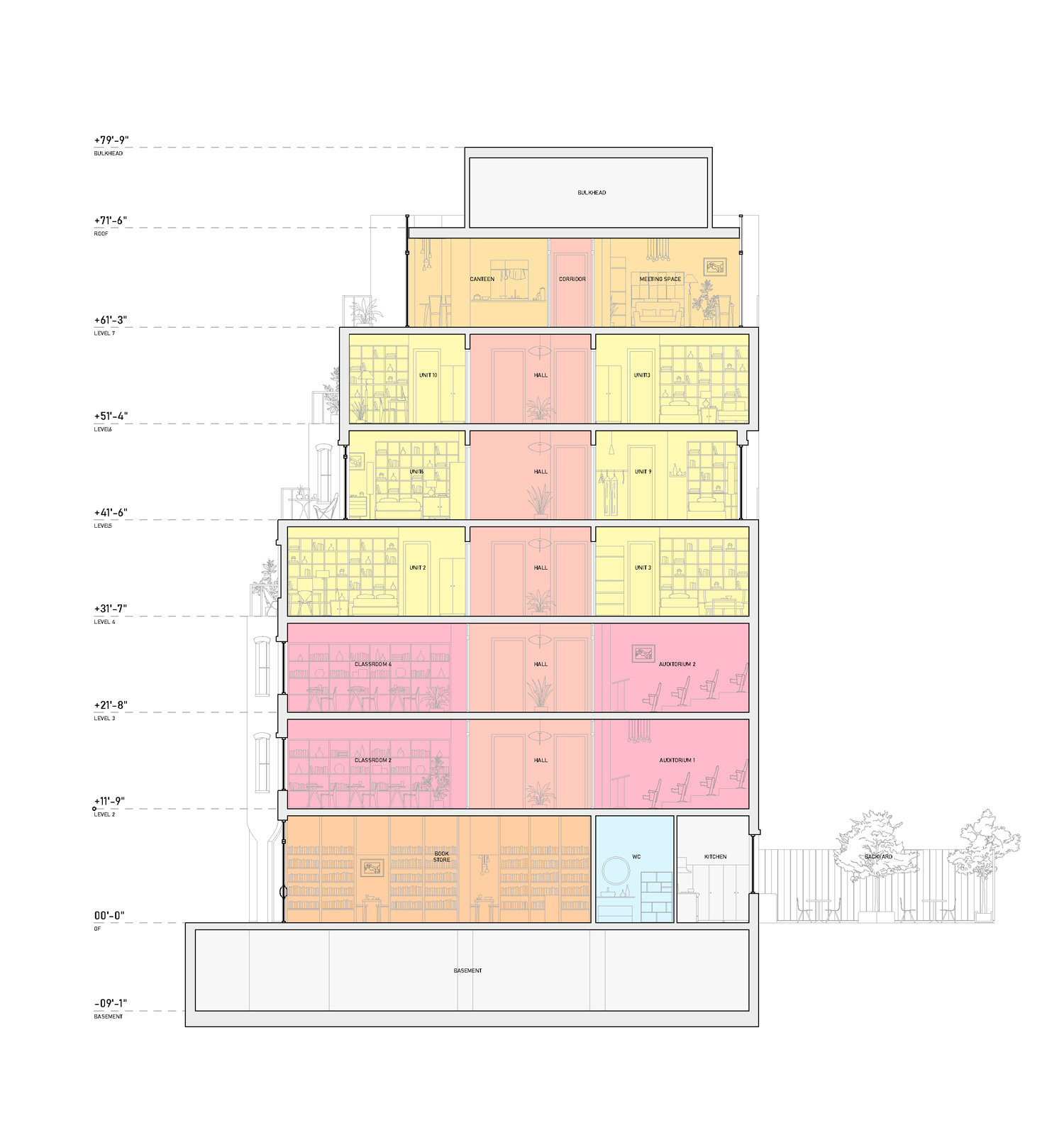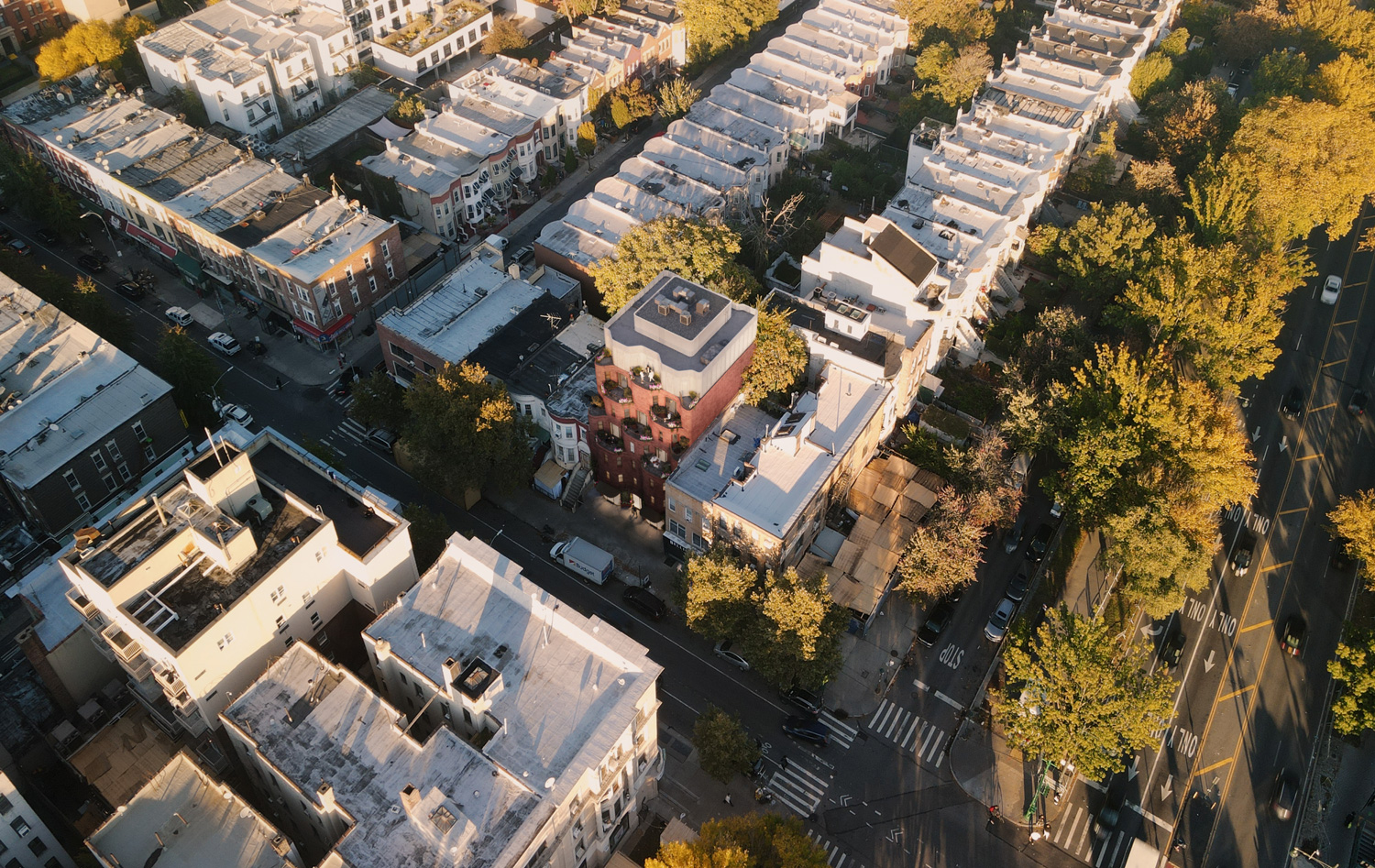☉ Crown House is a proposal by Anton Bashkaev developed in 2023. It is located in New York United States in an urban setting. Its scale is medium with a surface of 1.180 sqm. Key material is brick.
In the heart of Crown Heights, Brooklyn, there is an exciting architectural opportunity that has the potential to bring local communities together. A vacant site can be transformed into a new home for a multi-functional building, which includes a two-story education center, a bookstore, a coffee shop, four levels of residential units, and a top-floor lounge. This structure, known as «Crown House » aims to foster an environment of mutual acknowledgement, education, and collaboration. The site is situated in Crown Heights, Brooklyn, at the intersection of Eastern Parkway and Kingston Avenue, where the local Afro-Caribbean and Jewish Hasidic communities overlap. Over the past decade, this neighborhood has become increasingly popular among young professionals from all corners of the world, who yearn to live and work in the bustling city of New York.
Being one of the latter, I moved here in February 2019 and, over a tumultuous time of pandemic, established friendships with members of all three communities. The neighborhood has greeted me with its unique architecture and landscape, incredible cuisine, and an unparalleled cultural diversity. Overnight the war in Ukraine broke out. Raising our voices against it, my family have faced the threat of incarceration within Russia. In the matter of hours they had to make a decision to leave our home and flee, and I had nowhere to return.
During that time, Crown Heights and its three communities did not turn away, but made me feel like I belong. The work you will see is a testament to my gratitude for the love and inspiration this place has given me, and the result of a careful observation of its urban environment. A home for two very different communities, Crown Heights saw moments of discord and conflict. It culminated in the riots of 1991, generating a distrust lasting to the present day. A recent influx of so called “gentrifiers” presented another layer of social complexity.
The gem of the neighborhood, Brower Park does an excellent job of bringing children and adults from all the communities together in various tournaments, events, and activities. Locally, it serves as proof that good urban design, coupled with nature and accessibility, can help to mend social wounds and build new bridges of dialogue and understanding. This phenomenon of the park has tasked me with a question: how can new architecture contribute to the same goals?
An ideal building in this case would enhance a neighborhood on functional, aesthetic, and social levels. Not only should it be visually appealing, but also serve as a social hub, offering educational and communication opportunities to local youth. In this way, it also succeeds in becoming an integral part of the neighborhood’s history, commemorating its time and all who have lived within it, embodying Genius Loci. The main formgiving principle of Crown House was inspired by the historical architecture of the site, that had been lost. Like many streets in Crown Heights, this strip of Kingston Avenue features a series of bay window facades that creates a signature ripple effect.
On the first three levels, Crown House follows the historical massing of the site by integrating into the undulating profile of the Kingston Avenue facades. Beyond the third level, it begins to recess away from the street, respecting the datum line of cornices and creating uniquely shaped terraces for the residential program on the top floors. The incredible work that the Brower park is doing deserves support from a smart architectural initiative that will preserve and multiply the energy of the childhood friendships that it nourishes. This is why the main focus of Crown House is educational. The ground floor is thematically divided into three parts, inspired by the three communities: a Jamaican café, a Hasidic education center, and a bookstore that supplies a selection of reading from all over the world. All of the spaces can be entered separately from the street but have lateral passages connecting them. The education center has a lobby on L1 and occupies the rest of the building above with its classrooms, auditoriums, dorms, study spaces and a canteen.
A balanced combination of landscape and seating area allows the backyard to work flexibly with all three programs, providing space for student events, bookstore readings or outdoor cafe seating. It is crucial to turn a building from a rigid function into a flexible environment that can create rules for interconnected spaces and allow the community to use them according to their needs. For example, levels 2 and 3 of Education Center can be used as a Yeshiva school during the day and classrooms for the wider community to book after hours. These spaces can be used for foreign language study groups, musical instrument learning sessions, diabetes prevention classes, and many other live educational interactions for groups of all ages.
The backyard can also be used by all the ground floor programs, as an extra seating area for Café, a book reading club for Bookshop, or an outdoor classroom for Education Center. Moreover, these three different programs can be open to each other, creating a unique synergy to encourage people to communicate and interact with one another. For example, Café would have flyers for the next bookshop event, the bookshop would recommend upcoming after our classes in Education Center, and Education Center students would get a discount on their coffee and pastry at the cafe. Crown House has three levels of residential units for Yeshiva students and visiting lecturers. They belong to the Education Center and can be accessed separately after hours. The top floor is the student lounge, which can also be used for external symposiums and community events on the weekend. This allows Crown House to be economically viable for the owners 24/7 and create dynamics that are beneficial to the wider community.
